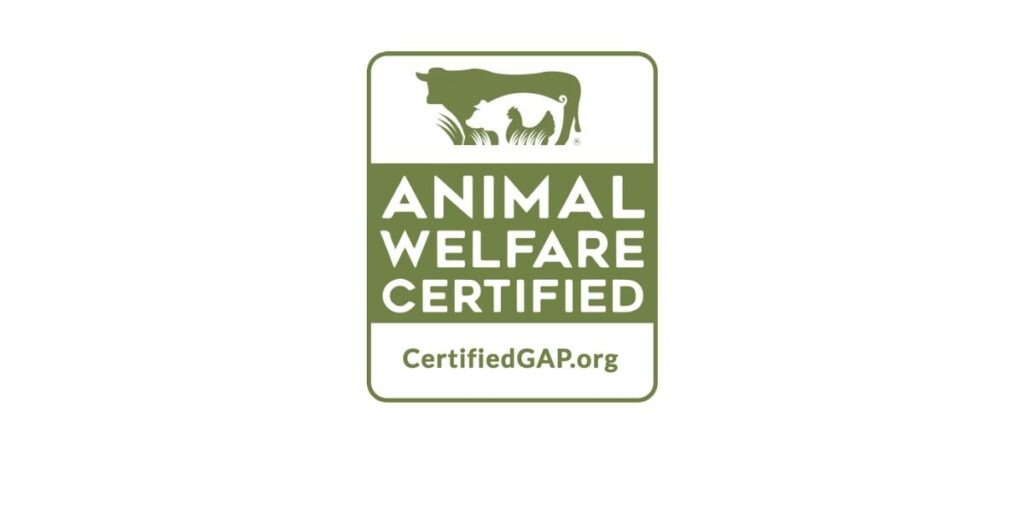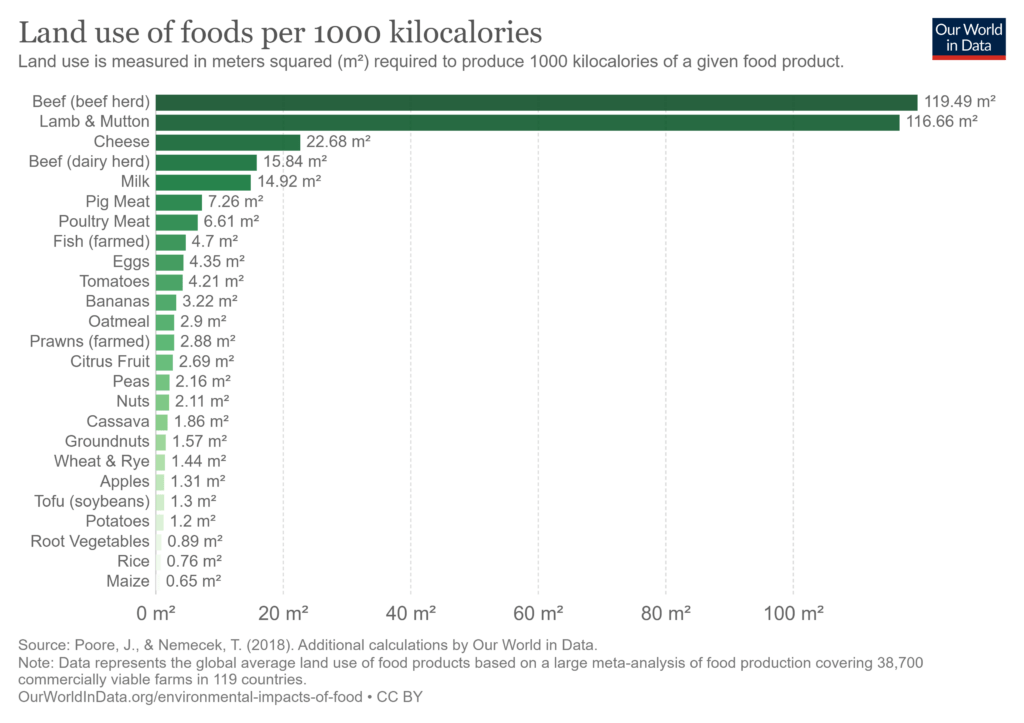I’ve tried every kind of diet: vegan, gluten-free, vegetarian, sugar-free, and even carb-free. You know what I discovered? Restrictive eating doesn’t work for me, and it doesn’t work for my family. I grew up in Sweden eating meatballs and elk meat. Going vegan (even if it is for the environment) simply doesn’t feel natural. So after years of trial and error, I’ve realized the best diet for my entire family is a flexible and inclusive one. And it includes sustainable meat.
There’s a lot of talk about diet in the sustainable living community, and eating less meat is often recommended. I agree. Most American’s eat more red meat and bacon then is probably good for them and the environment. But that doesn’t mean that beef, pork and poultry have to be completely off the table if it’s something your family occasionally enjoys if it comes from a more sustainable source.
Sustainable meat is becoming more widely available, however, most meat in the United States still comes from factory farms. Which is why I created this guide to sustainable meat. Here I’ll explain what sustainable meat is, why it’s important for the environment, and which products and certifications to look for.
Why we need sustainable meat
You may have heard that raising the livestock that gives us beef is bad for the environment. That’s because 26% of the world’s ice-free land is used for livestock grazing. Growing food for those animals takes 33% of farmland, and forests are often cut down to make room for grazing cattle. A scary 32 billion acres of forest are cut to raise and feed livestock each year, according to FAO.org.
We need those trees. Trees store carbon. When we cut those forests down, the carbon that’s released adds to global warming. Then there are the cow farts. All those farts release methane, a greenhouse gas 25% more potent than carbon. The cow manure and fertilizers used to grow their feed releases nitrous oxide, an even stronger greenhouse gas. So cutting back on beef is essential.
But beef is a regular part of many American’s diets and a necessary food staple for many people in developing countries. Plus, by 2050 the world’s population will reach 10 billion people. Food production will need to increase by 70% by 2050 to feed us all. That’ll mean something along the lines of an additional billion tonnes of grain and 200 million tons of meat according to the UN Food and Agriculture Organization. We all have to eat. This leads me to why we need sustainable meat.
What is sustainable meat?
There are two kinds of sustainable meat. The first kind is real and natural meat raised on sustainably-managed and regenerative farms. The other kind of sustainable meat is man-made and usually made from vegan ingredients to make it taste like real meat.
Real and man-made meats each have pro’s and con’s, but both are often considered healthier choices for the planet than factory-farmed meat. Factory-farmed meat has dire consequences for the environment such as water pollution, and climate change. Livestock raised using regenerative agriculture practices are not only better for our health, but they may also be a source of carbon storage.
What is regenerative agriculture?
Regenerative agriculture uses holistic practices like cover cropping, crop rotation, no-till, and livestock to make soil healthy. That healthy soil becomes a carbon sink that helps draw carbon dioxide (a greenhouse gas) out of the atmosphere, according to the Rodale Institute.
“Livestock play an integral part in regenerative agriculture, fertilizing soil, assisting with weed management, and building the soil structure to allow for greater water infiltration and less erosion,” according to Margaret Wilson, the Media Relations Specialist at the Rodale Institute. “Livestock integration and rotational grazing also increase soil carbon sequestration by encouraging plants to send out deeper and stronger roots, boosting soil biomass and organic matter as they decompose.”
The Rodale Institute and the Savory Institute have both developed regenerative agriculture certification programs that help farmers manage their land so that it is regenerative.
Read: The future of organic looks like Regenerative Organic Certified products
Natural sustainable meat options
There are three main sustainable meat certifications to look for at the grocery store and online.
Certified organic meat
This is the most basic certification. Certified organic meat has been raised on organic feed and can not have been given growth hormones or antibiotics.
“Regulations require that animals are raised in living conditions accommodating their natural behaviors (like the ability to graze on pasture), fed 100% organic feed and forage, and not administered antibiotics or hormones,” according to the USDA.org.
Animal Welfare Certified
Animal Welfare Certified rates how the animals were raised. Farms and ranches raising animals have met over 100 basic standards for animal welfare, including space to move around, no cages or crates, and no antibiotics or hormones. There are six levels of certification such as access to outdoors, pasture-raised, and entire life on one farm.

Ecological Outcome Verified through Land to Market™
The Savory Institute’s Ecological Outcome Verified through Land to Market™ is a fairly new certification program for products that come from regenerative farms. The animals on these farms have been raised using holistic management techniques that regenerate and improve the quality of the land.
“Nature is a living system and has the ability to generate life, so by properly managing a landscape we have the ability to put more back into the system than we take out,” according to David Rizzo Chief Operating Officer Land to Market Program.
You can find Ecological Outcome Verified through Land to Market™ products online and at natural grocery stores like Whole Foods. Brands with Ecological Outcome Verified through Land to Market™ products include:
- Epic
- Force of Nature
- REP Provisions
- White Oak Pasture
- Iberian Pastures
- Cabriejo Ranch
- Richard’s Grassfed Beef
- Force of Nature Meats

Vegan sustainable meat alternatives
There are several vegan sustainable meat alternatives available to buy in grocery stores and at restaurants. You can find Impossible Burgers at restaurants around the United States and Beyond Meat at many natural grocery stores.
Impossible Burger
Impossible Foods has created a burger that tastes like a burger but is actually vegan. The ingredients include wheat and potato protein, plus the ingredient soy leghemoglobin which makes it taste like meat.
“One Impossible Burger uses about one quarter of the water, 5% of the land and contributes 13% of the emissions compared to a burger made from cows,” compared to typical U.S. beef production based on a life cycle assessment outlined in their sustainability report.
Beyond Meat
The Beyond Burger is another meatless vegan burger, but this one you can buy at most grocery stores. The ingredients in Beyond Meat are different from the Impossible Burger. The main ingredient in the Beyond Burger is pea protein. But they’re both trying to make vegan burgers that taste like meat.
Beyond Meat burgers don’t taste like real burgers to me, but they also don’t taste bad. They taste like the burgers I’m used to in Sweden where they add various seasonings to their burgers. My husband has asked me to Beyond Burgers again, so that’s a good sign. My kids didn’t like them, but they don’t like anything, so that’s not saying much.
A sustainable diet
Which brings me to eating a sustainable diet. Not all meat has the same environmental impact. If the most convenient option for your family is still a traditional grocery store where sustainable meat options are sparse, you can still eat meat that’s healthier for you and the environment by choosing chicken and pork over beef. And don’t forget fish! It’s a great source of protein and omega 3’s.

The Mediterranean diet
Most of the meals I cook would fall under a Mediterranean style diet. I cook (and bake) with a lot of grains, beans, veggies, and fruits. I also cook a fair amount of fish, chicken, and occasionally pork. I limit beef for special occasions and road trips where I know the only thing on the menu is a hamburger and fries. Luckily, Impossible Burgers are now served at some fast-food restaurants like Burger King.
So if you’re looking for the most sustainable diet, look toward the Mediterranean or Nordic diet. A few good books include the “Blue Zones” by Dan Buettner and “Food Rules: An Eater’s Manual” by Michael Pollan. This way of eating doesn’t specifically call for sustainable meat, but they do offer good guidelines on how to eat healthy, which should always be the foundation of a sustainable diet.
When in doubt:
Eat food. Not too much. Mostly plants.”
– Food Rules, Michael Pollan
